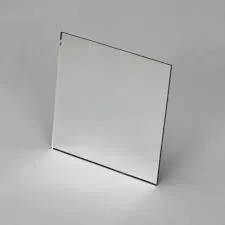

The Benefits and Applications of Tinted Glass
In recent years, tinted glass has gained significant popularity in various fields, ranging from architecture to automotive design. This type of glass is treated to filter sunlight, reducing glare and UV rays while enhancing privacy. The increasing demand for tinted glass can be attributed to its myriad benefits and versatile applications.
Understanding Tinted Glass
Tinted glass is produced by adding a special material during the manufacturing process that alters the glass’s light transmission properties. The degree of tint can vary, allowing for a wide range of options to suit different needs. Typically, tinted glass is characterized by its ability to absorb, reflect, and scatter sunlight, making it a favored choice for many applications.
Energy Efficiency
One of the most compelling reasons for using tinted glass is its energy efficiency. By reducing the amount of solar heat entering a building, tinted glass can lower the reliance on air conditioning systems. This not only helps in decreasing energy costs but also contributes to a greener environment. Buildings that use tinted glass can achieve better energy ratings, making them more attractive to eco-conscious consumers and investors alike.
Glare Reduction
Glare can be a significant problem in both residential and commercial settings, especially in areas with direct sunlight. Tinted glass minimizes glare, making indoor environments more comfortable and enhancing the visibility of screens for computer work. For offices and retail spaces, this can lead to increased productivity and a better shopping experience for customers.
UV Protection
Another important feature of tinted glass is its ability to block harmful ultraviolet (UV) rays. Prolonged exposure to UV rays can cause skin damage and contribute to the fading of interior furnishings. By incorporating tinted glass, homes and businesses can protect their occupants and their investments. This protection is particularly beneficial for display cases in museums and galleries that house sensitive artifacts.

Aesthetic Appeal
In addition to its functional benefits, tinted glass also has aesthetic value. It can enhance the modern look of buildings, vehicles, and interior spaces. With a variety of tint shades available, architects and designers can personalize a structure's appearance, allowing it to blend seamlessly with its surroundings or stand out as a unique feature. The sleek, sophisticated look of tinted glass can elevate the overall design of any project.
Privacy Enhancement
For residential applications, tinted glass provides an excellent solution for privacy without sacrificing natural light. Homes situated in busy urban areas or close to neighbors can benefit from tinted windows that obscure visibility from the outside, creating a more serene living environment. This feature is particularly sought after in bathrooms, bedrooms, and glass-walled offices.
Automotive Use
Tinted glass is not limited to buildings; it has also become a staple in the automotive industry. Car manufacturers often offer tinted windows to enhance privacy, reduce glare, and protect passengers from UV exposure. Numerous studies have shown that vehicles equipped with tinted glass can remain cooler in hot weather, improving comfort during travel. Additionally, tinted windows contribute to the sleek look of a vehicle, appealing to style-conscious consumers.
Safety and Security
Tinted glass can also offer enhanced safety and security. Some types of tinted glass are designed to be shatter-resistant, making it more difficult for potential intruders to break in. This characteristic provides peace of mind for homeowners and business owners alike. Furthermore, in the event of an accident, tinted windows can hold shattered glass together, reducing the risk of injury from flying pieces.
Conclusion
Overall, tinted glass serves as a practical and aesthetic enhancement in various fields. Its energy efficiency, glare reduction, UV protection, and privacy benefits make it an excellent choice for modern architecture and vehicle design. As the demand for sustainable and functional building materials continues to grow, tinted glass will undoubtedly play a crucial role in shaping our environments.